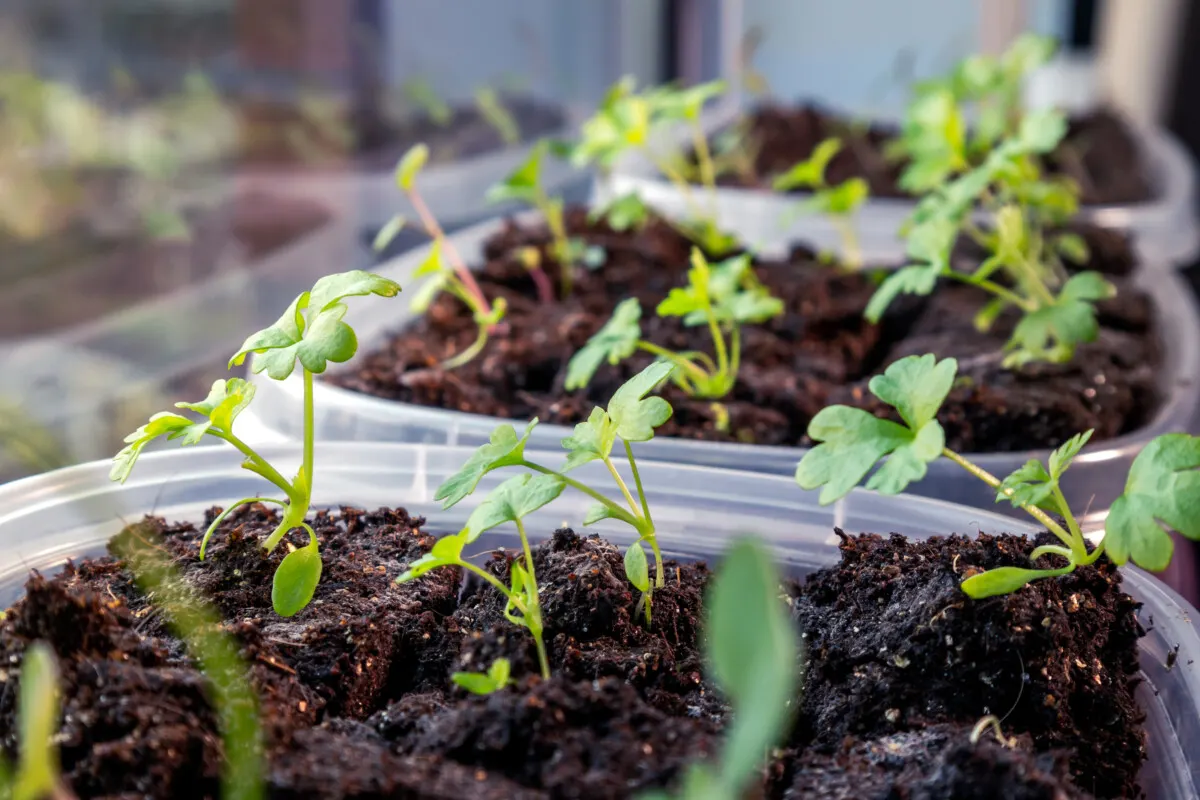
If you’re planning on sowing a few seeds indoors to get a jump on the growing season, then don’t forget to make room for a few flowers. We get so caught up in starting our tomatoes, peppers and other veggies that we forget there are plenty of flowers we can sow before spring, too.
Why Sow Flower Seeds Indoors?
There are plenty of beautiful offerings on hand in garden centers each spring, so why should you start flower seeds? Just like starting your own vegetables, you get exactly what you want. And when it comes to blooms, that means not only the variety but the color, too.
Even if you don’t have large flower beds that need to be filled, planting flowers in your vegetable garden is a wise idea. Jump on the cottage-core bandwagon and add more flowers to your life.
Sowing flower seeds indoors can save money, too.
While you might only need a single 4-pack of tomatoes for your garden this year, you’ll likely need quite a few more starter plants when it comes to flowers. That’s because you need enough to fill in the area you’re planting, whether it’s a couple of planters or an entire flower bed. Otherwise, it looks sparse and patchy. That trip to the local garden center to pick up a few posies can add up much faster than their veggie counterparts.
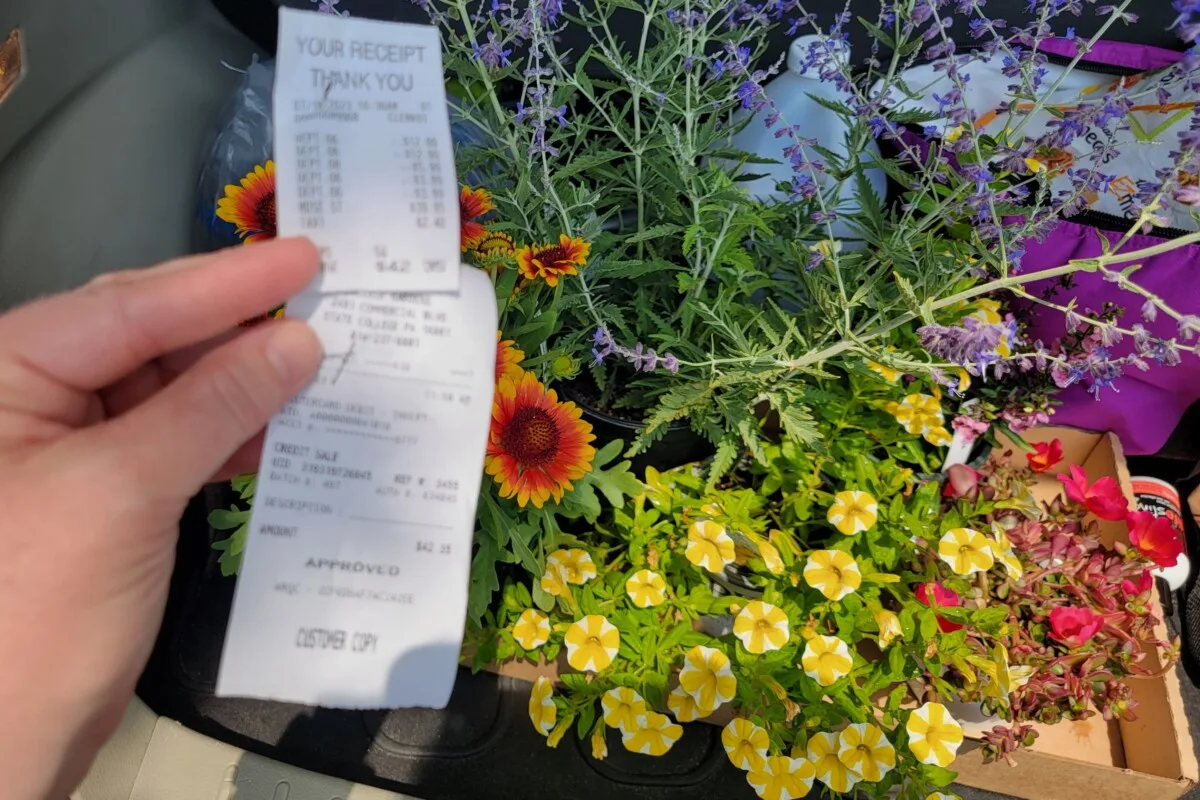
If you find you’re spending quite a bit on annual flowers each year, consider starting them yourself instead. You’ll have access to a much larger variety of blooms and colors and save money as well.
Frost Dates and Flowers
Before you get started, you’ll need to know what the last frost date is for your area. In November 2023, the USDA released an updated hardiness zone map. If it’s been a while since you’ve checked it out, you might want to see if there have been any changes to your growing zone and frost dates. Mickey has everything you need to know right here.
Once you know your last frost date, count back eight to ten weeks to know when to sow your flower seeds indoors.
A Quick Inventory of What You’ll Need
To get growing off to a good start, you’ll need a few things.
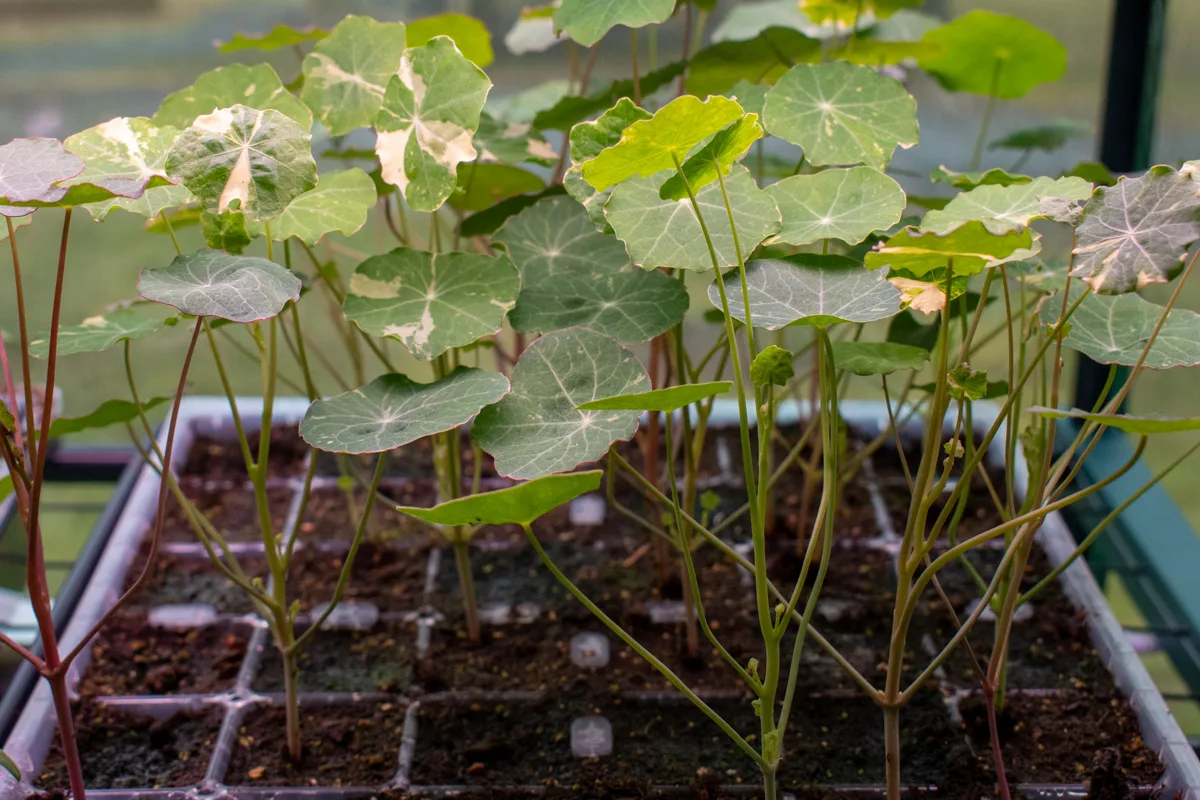
Something to Start Your Seeds In
You can use anything from clean yogurt cups to toilet paper rolls to the little seed germination trays with the lids that always show up in stores each spring. Just be sure there is a hole for drainage in the bottom, and you have a way to cover your seedlings.
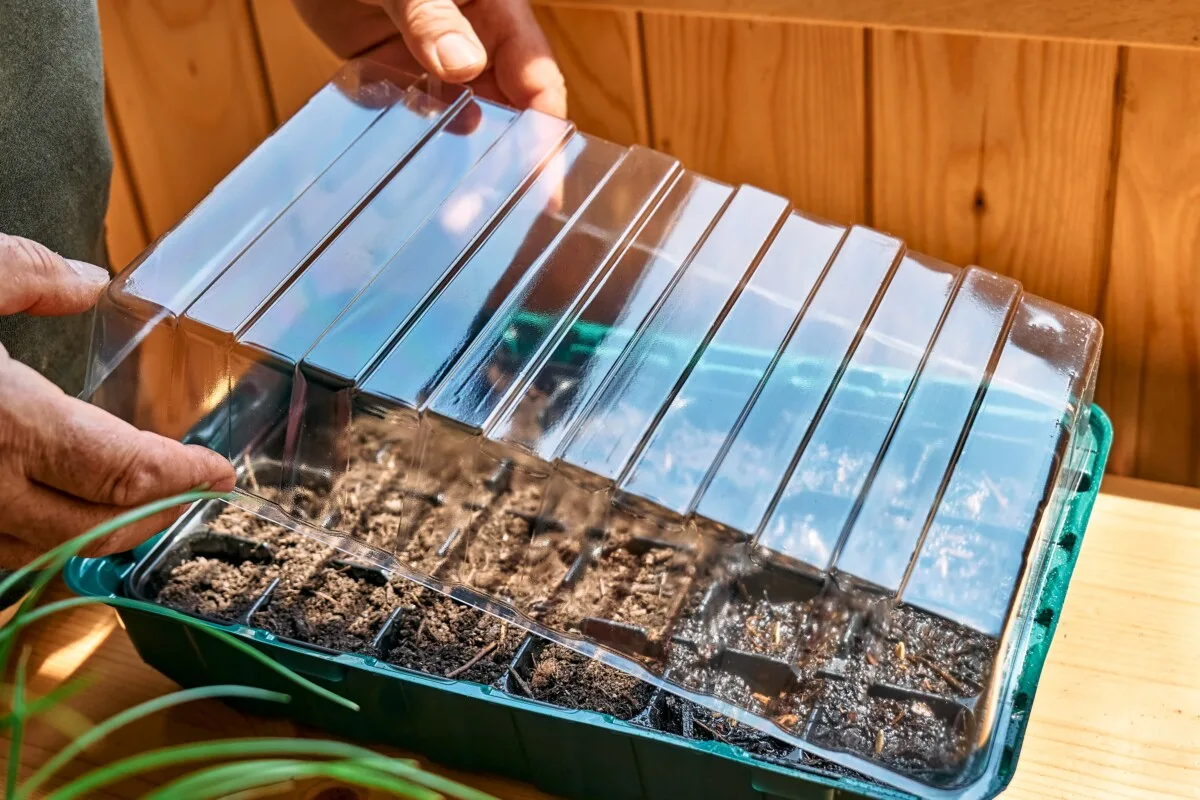
Soil or Seed-Starting Mix
Many gardeners swear by seed-starting mix because its lightweight ingredients make germination easier. You can buy it or make your own. The truth is, you can use any lightweight growing medium to start seeds in. If you already have an all-purpose potting mix, you can add perlite or vermiculite to help aerate it and make it fluffier.
Water & Humidity
Moisten your potting mix before sowing seeds. Flower seeds tend to be small and light, which makes it easier to dislodge them or bury them when watering. It’s a good idea to use a spray bottle with a fine mist to water with until seeds have germinated and set their first true leaves. The mist is less likely to move the seeds and seedlings around.
Once you’ve sown the seeds, you need to create a warm, humid environment by covering them. If you’ve got a tray with a lid, you’re all set. Otherwise, you can use clear plastic baggies or cling wrap.
Don’t seal off the seedlings completely. Leave the lid askew or leave ways for air to get out to avoid damping off issues.
Heat
While you can get away with starting plenty of vegetable seeds without heat, most flower seeds will not germinate if the soil is too cold. If you live in a climate with cold winters, you may benefit from using a heating mat when starting flowers indoors. These inexpensive mats provide gentle heat to assist in germination. (This is the one I use, and I keep it set to 75F for flowers.)
Light
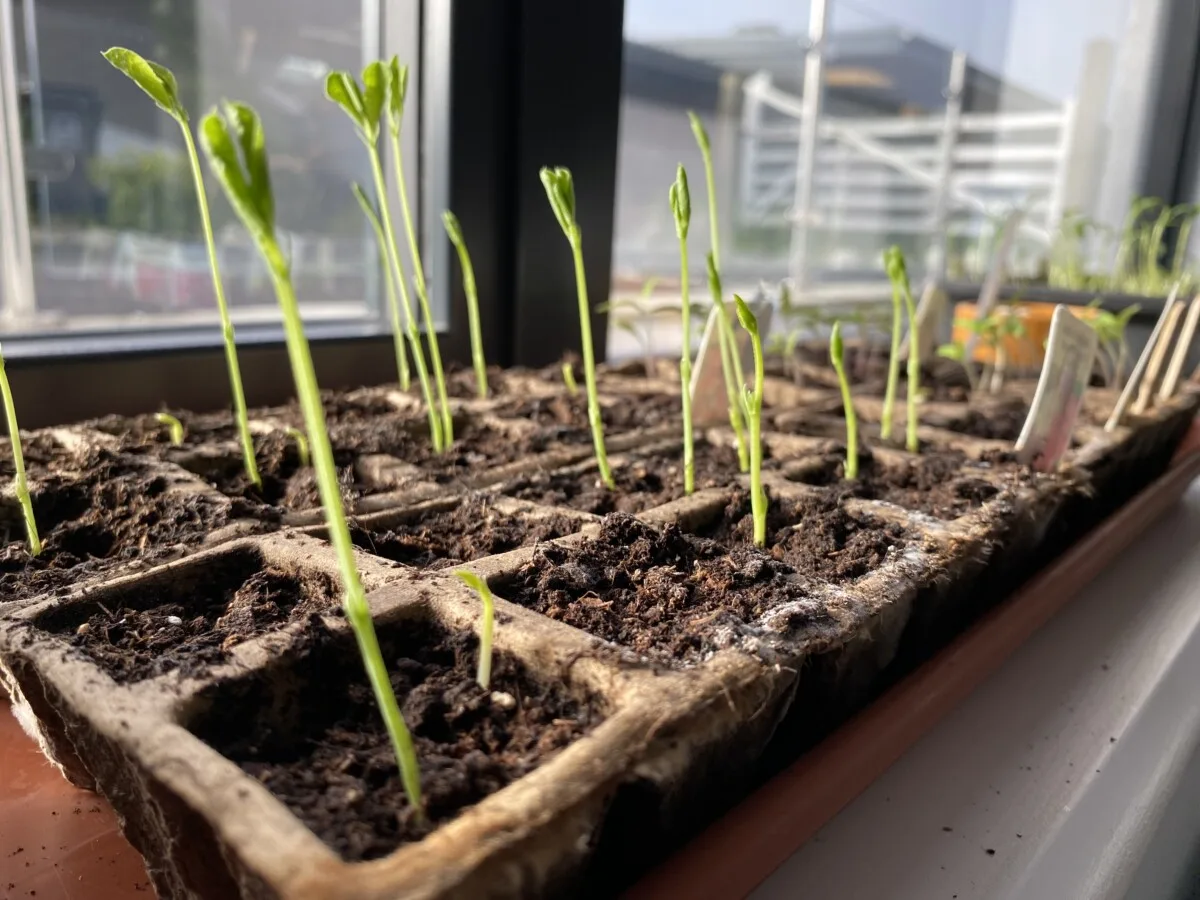
New plants need lots of bright light to grow sturdy. If they don’t get enough light, they stretch and become leggy. If you can’t provide at least twelve hours a day of continuous bright light, then you might want to pick up some grow lights. Look for grow lights that are ‘full-spectrum’ to ensure your plants receive light as close to natural sunlight as possible.
Remember, the more seedlings you grow, the more light you will need. Seedlings need between 2,000-3,000 lumens per square foot. Use this calculation to figure out how many lights you will need.
A Few Notes About Sowing Flowers Indoors
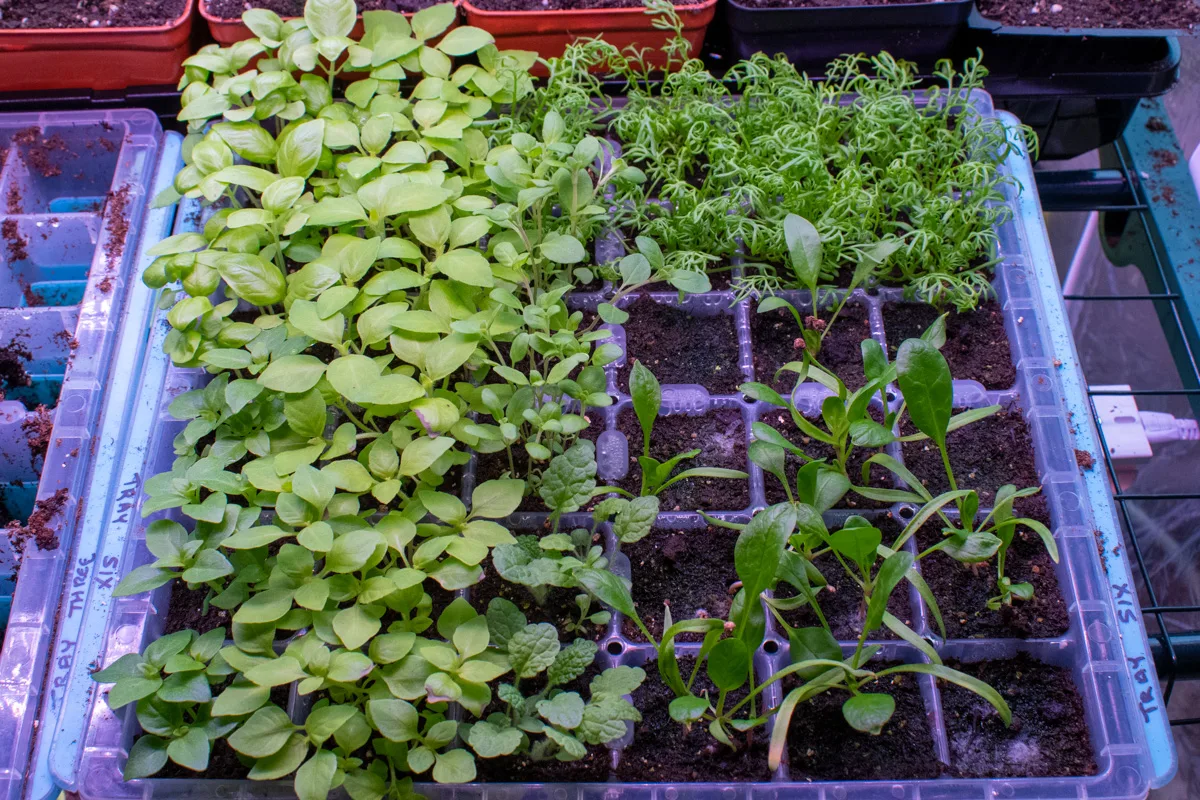
It’s important to read the seed packet so you know how deep the seeds need to be planted. Rather than trying to press them into the growing mix, it’s best to sow seeds on top and then cover them with a layer corresponding to the correct depth.
Many flower seeds need light to germinate and will not need to be covered at all, known as surface sowing. Be careful when misting these seeds, as even a fine mist can shuffle them around.
Mist your sown seeds until they’re thoroughly wet. Water is an important part of germination, so you’ll want to check them daily to make sure they stay moist. Don’t forget to label your seeds and note the date when you planted them. Now, sit back and wait.
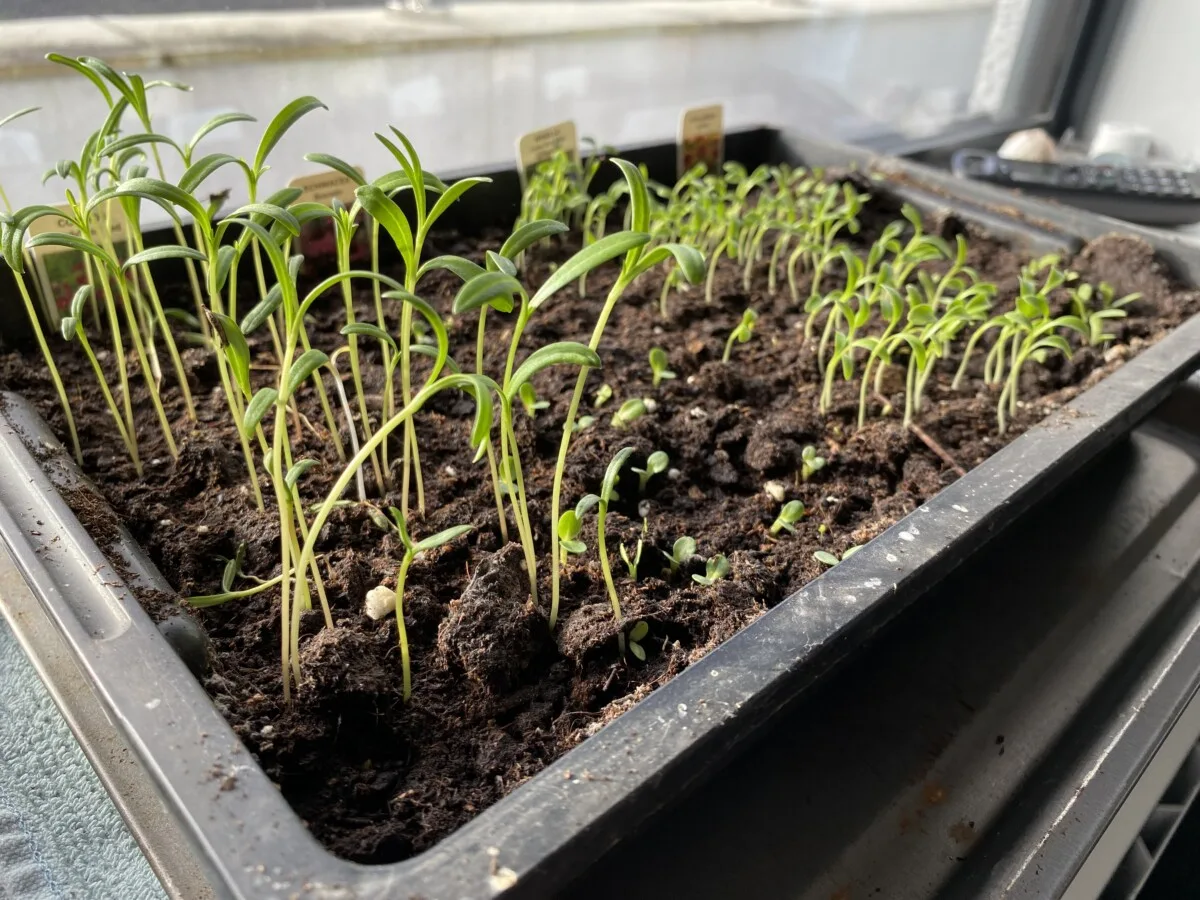
Okay, now that you have the tools for the job and you know what to do, let’s pick out some flowers!
Always transplant outside after all danger of frost has passed. As most of these are grown as annuals, hardiness zones don’t matter too much beyond the first and last frost dates. Finally, I’ve given you some general guidelines here, but it’s always best to defer to the instructions on the seed packets.
16 Flowers to Sow Indoors Before Spring
1. Alyssum
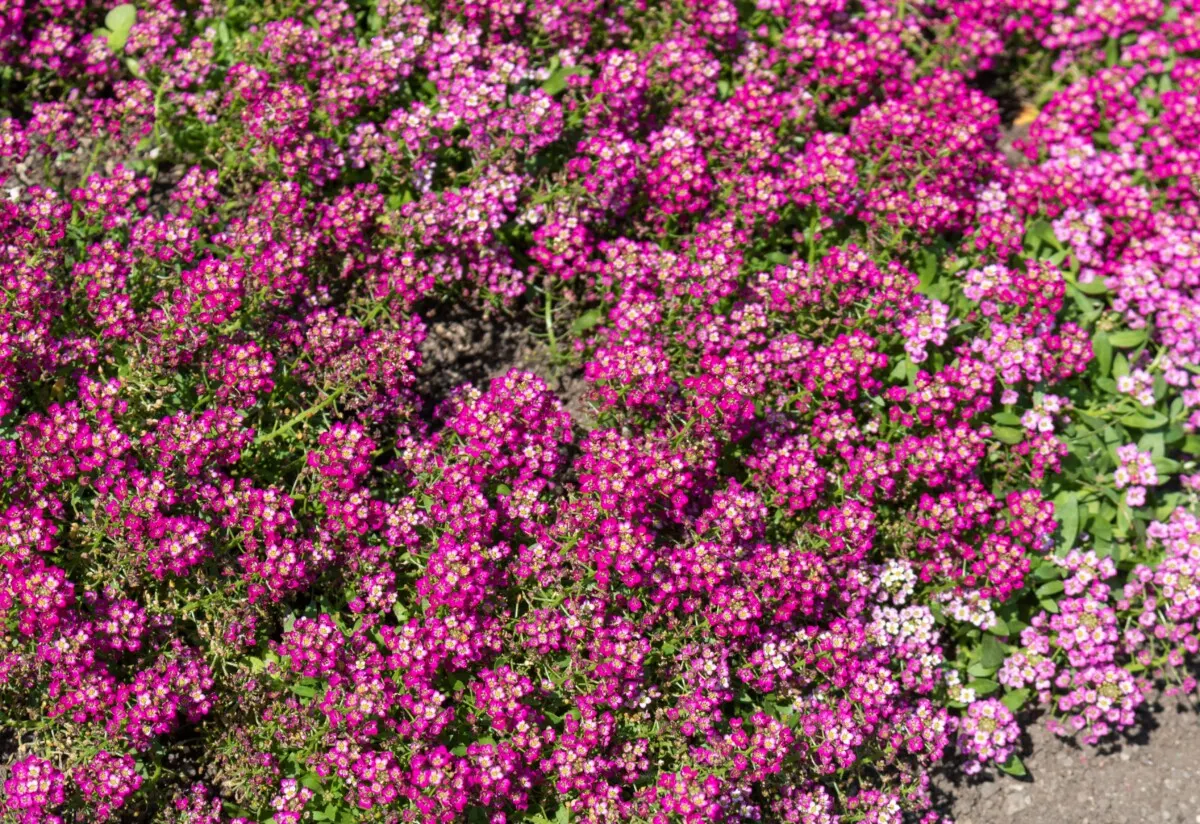
Alyssum grows delicate clusters of tiny, fragrant flowers resembling a soft, white or pastel-hued carpet. Their low-growing, mounding habit creates a charming and airy effect in gardens and containers. They’re great for filling in areas between taller plantings.
- Start Indoors: 6-8 weeks before the last frost.
- Planting Depth: Surface sow; light is needed for germination.
- Germination Time: 7-14 days.
- Light Requirements: Full sun to partial shade.
- Soil: Well-draining.
2. Angelonia
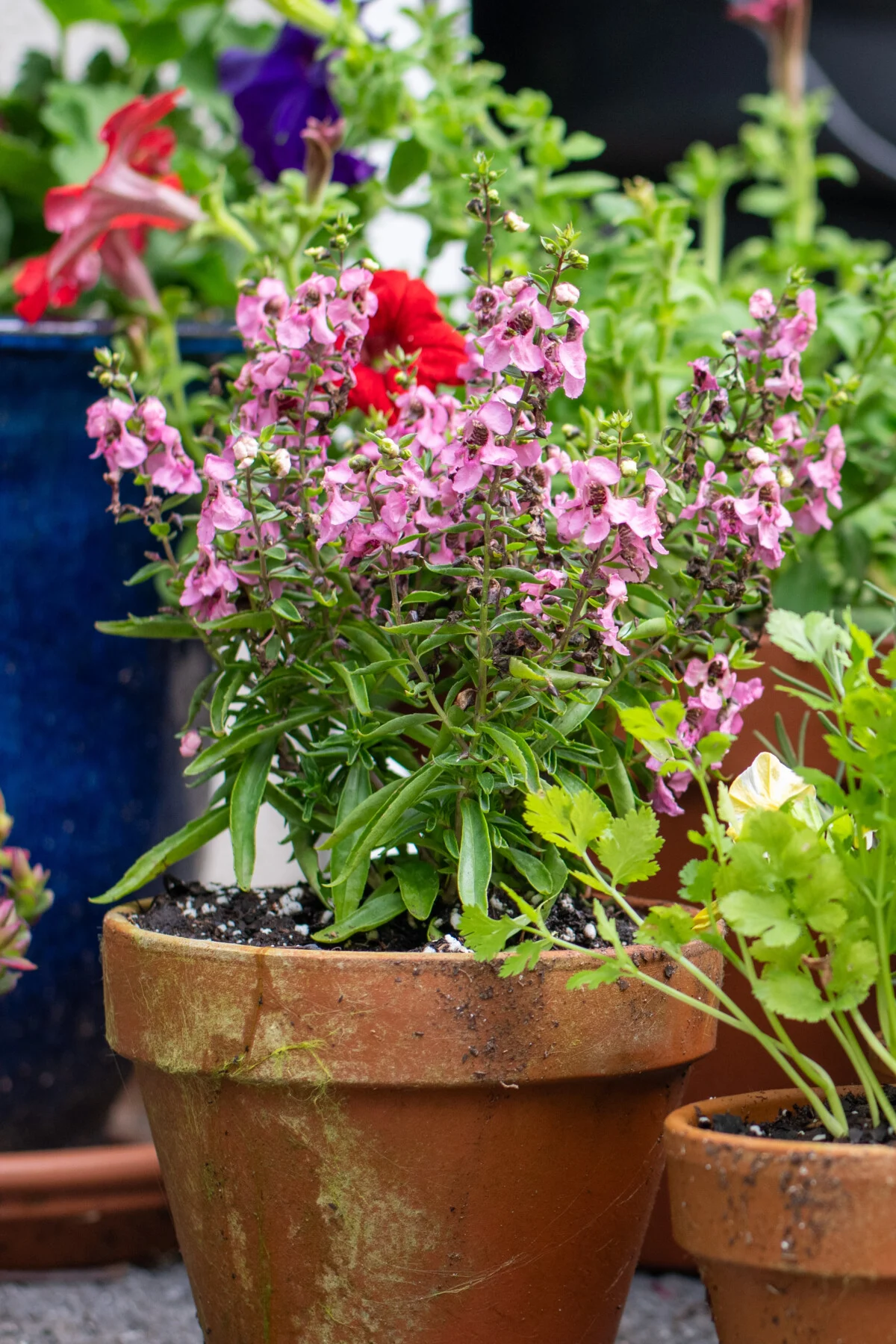
These are a personal favorite and scratch my “I’m totally Beatrix Potter in my English garden” itch. Angelonia, also known as “Summer Snapdragon,” boasts tall spikes adorned with tiny, snapdragon-like blooms. With a range of colors, including lavender, pink, and white, these flowers bring a graceful, upright elegance to gardens and are loved for their prolonged summer bloom. A cottage-core must.
- Start Indoors: 8-10 weeks before the last frost.
- Planting Depth: Surface sow.
- Germination Time: 14-21 days.
- Light Requirements: Full sun.
- Soil: Well-draining.
3. Bachelor’s Button
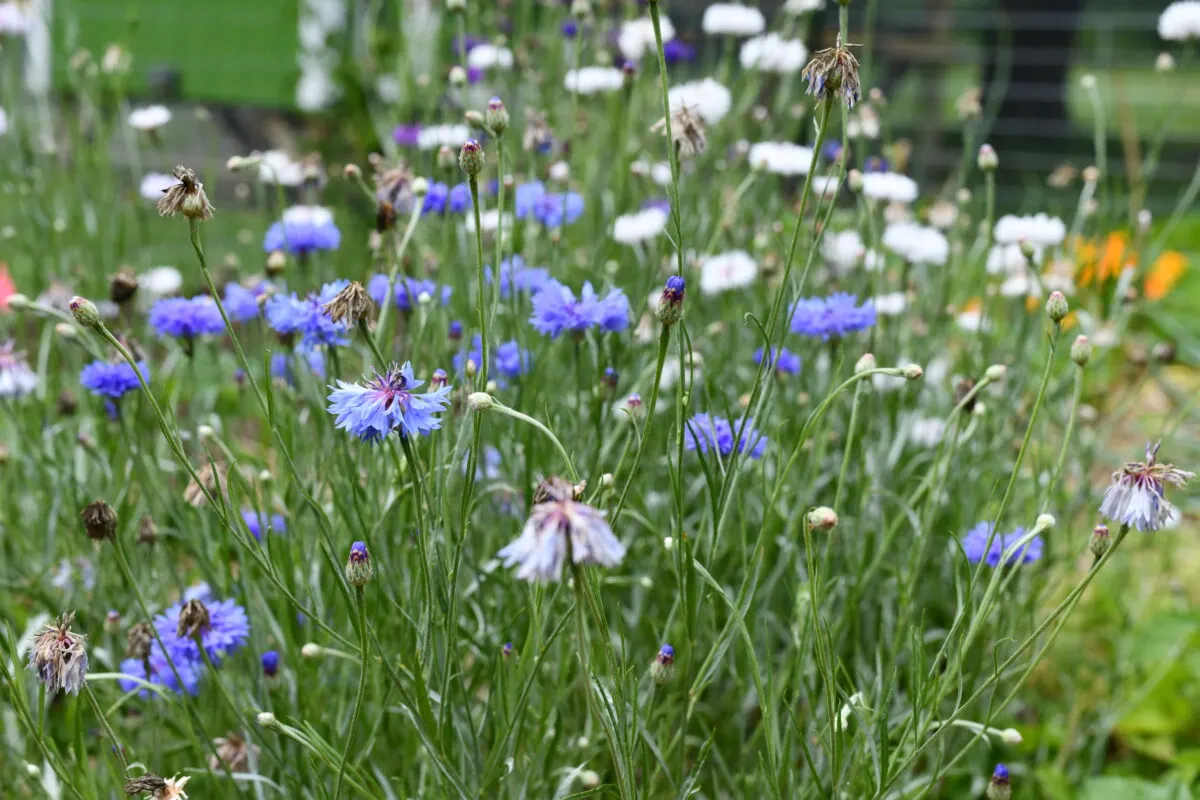
Bachelor’s Button, or Cornflower, features vibrant, fringed blooms in shades of blue, pink, and white. These guys are easy to care for. The charming simplicity of these flowers adds a delightful touch to cottage gardens and makes excellent cut flowers.
- Start Indoors: 4-6 weeks before the last frost.
- Planting Depth: Surface sow.
- Germination Time: 7-14 days.
- Light Requirements: Full sun.
- Soil: Well-draining.
4. Bells of Ireland
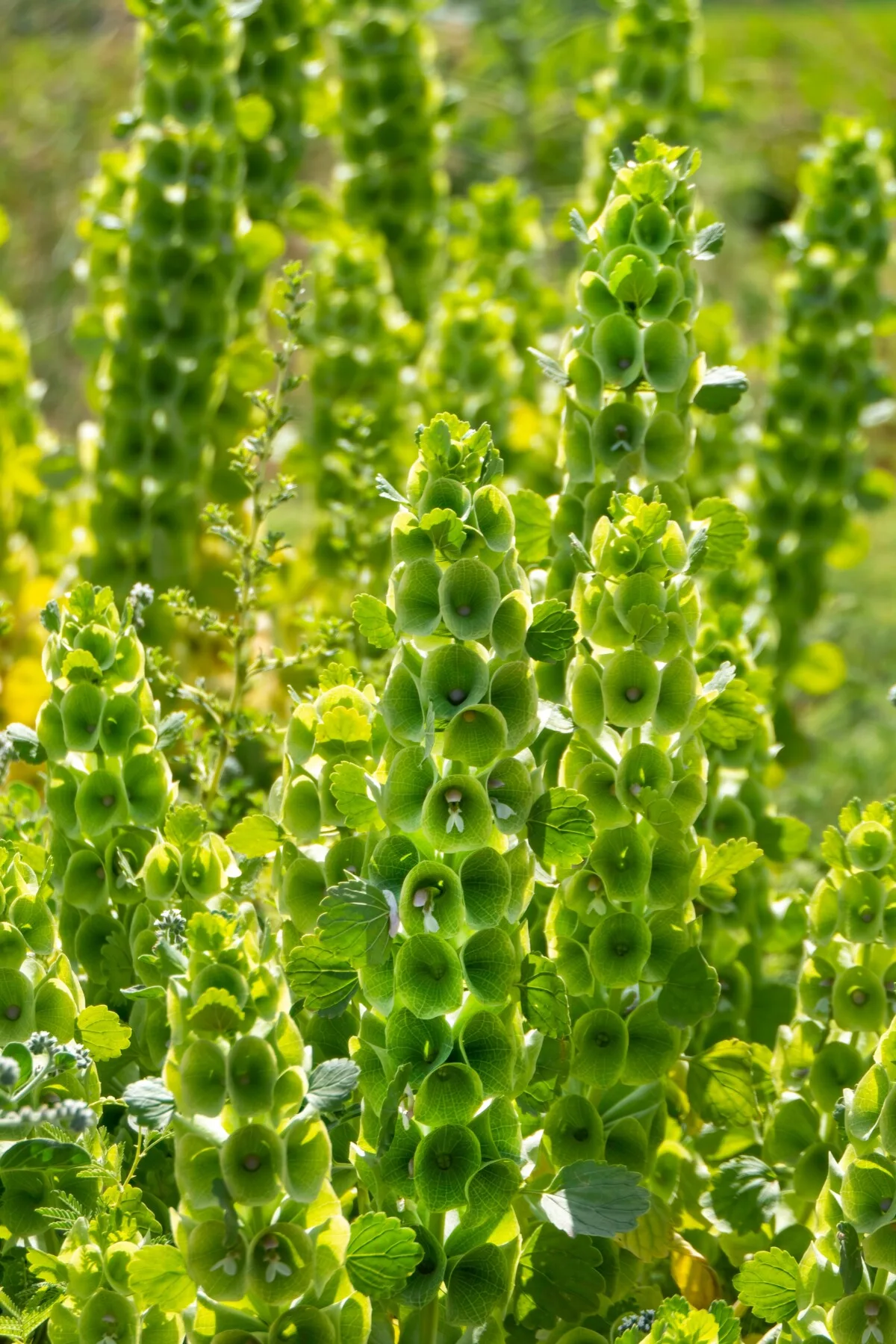
Bells of Ireland produce tall, vertical spikes adorned with bell-shaped calyxes in a vibrant shade of green. The unique, ornamental quality of these flowers adds a touch of sophistication and height to garden borders and floral arrangements.
- Start Indoors: 8-10 weeks before the last frost.
- Planting Depth: Surface sow.
- Germination Time: 14-21 days.
- Light Requirements: Full sun.
- Soil: Well-draining.
5. Calendula
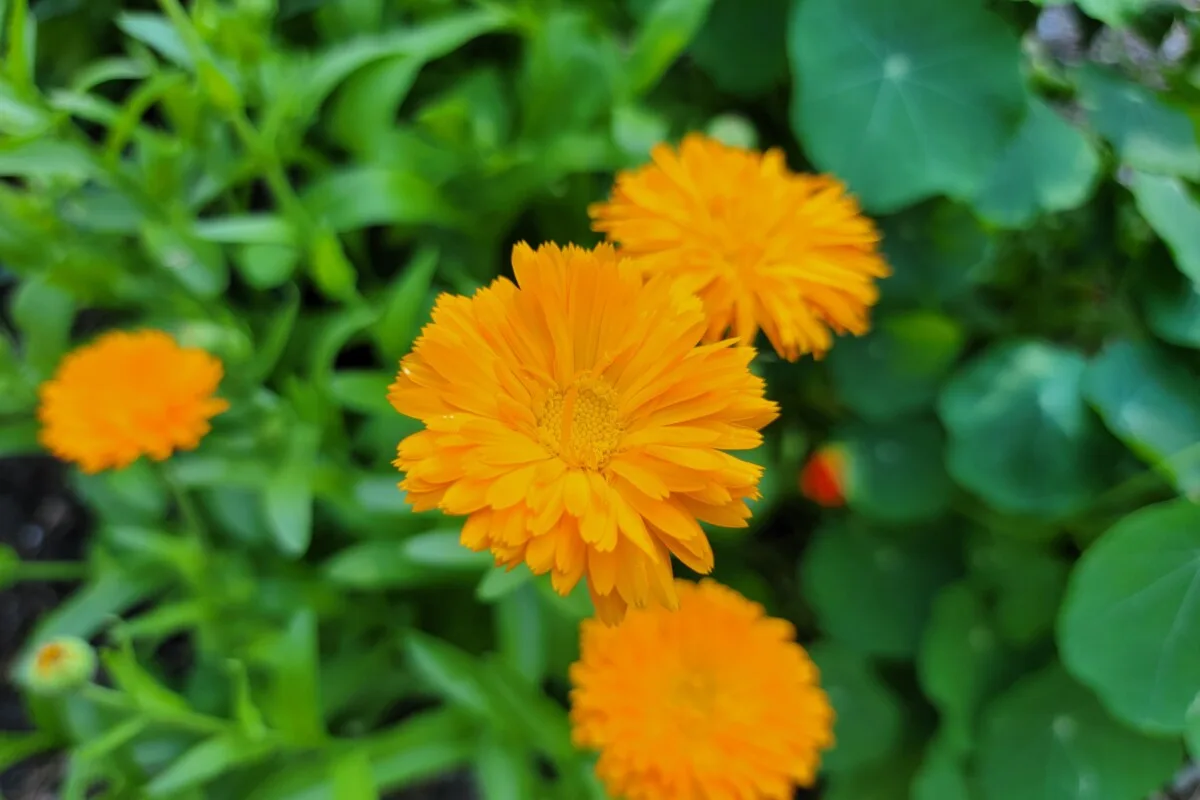
Calendula, or Pot Marigold, showcases sunny, daisy-like blooms in warm hues of orange and yellow. Not only prized for their beauty but calendula flowers are also known for their herbal properties, making them a versatile addition to both gardens and medicinal herb beds.
- Start Indoors: 6-8 weeks before the last frost.
- Planting Depth: Surface sow.
- Germination Time: 7-14 days.
- Light Requirements: Full sun.
- Soil: Well-draining.
6. Celosia
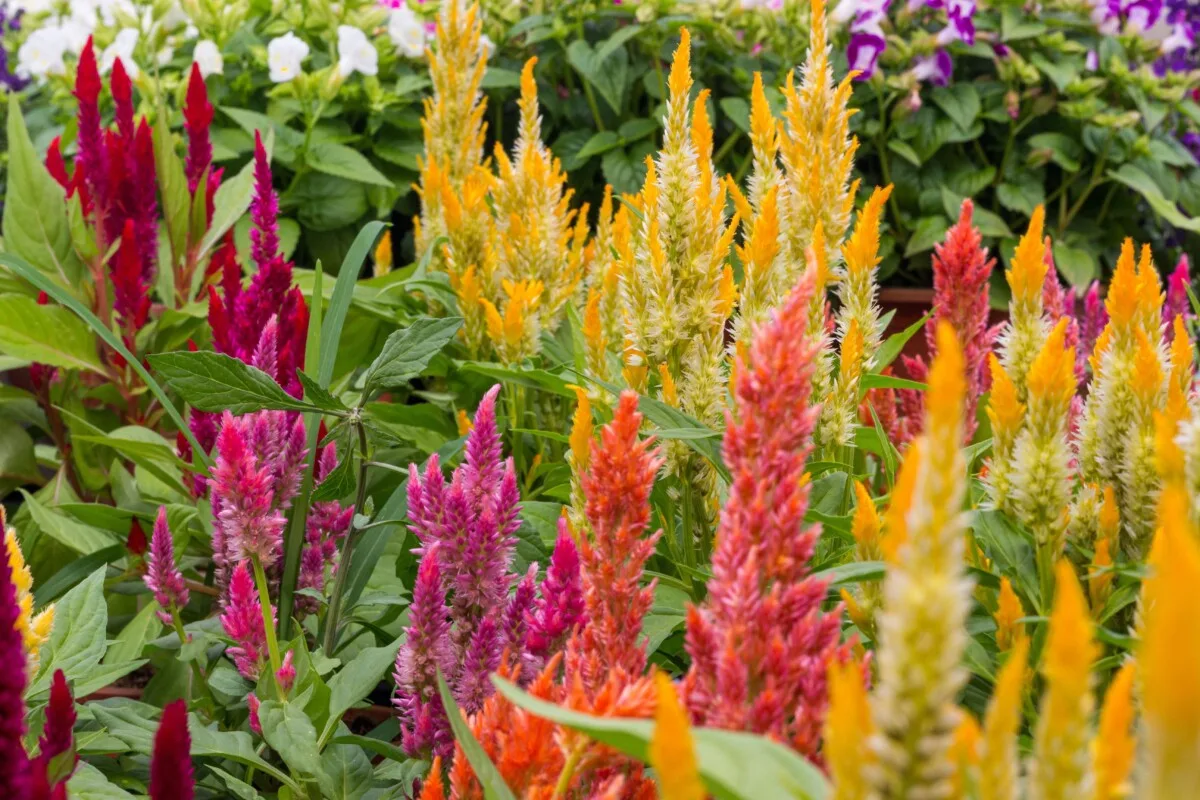
Celosia, also known as Cockscomb, displays bold, plume-like blooms in vibrant shades of red, orange, and pink. The unique, velvety texture and flame-like appearance make these flowers a standout feature in both garden beds and cut flower arrangements.
- Start Indoors: 6-8 weeks before the last frost.
- Planting Depth: Surface sow.
- Germination Time: 7-14 days.
- Light Requirements: Full sun.
- Soil: Well-draining.
7. Cleome
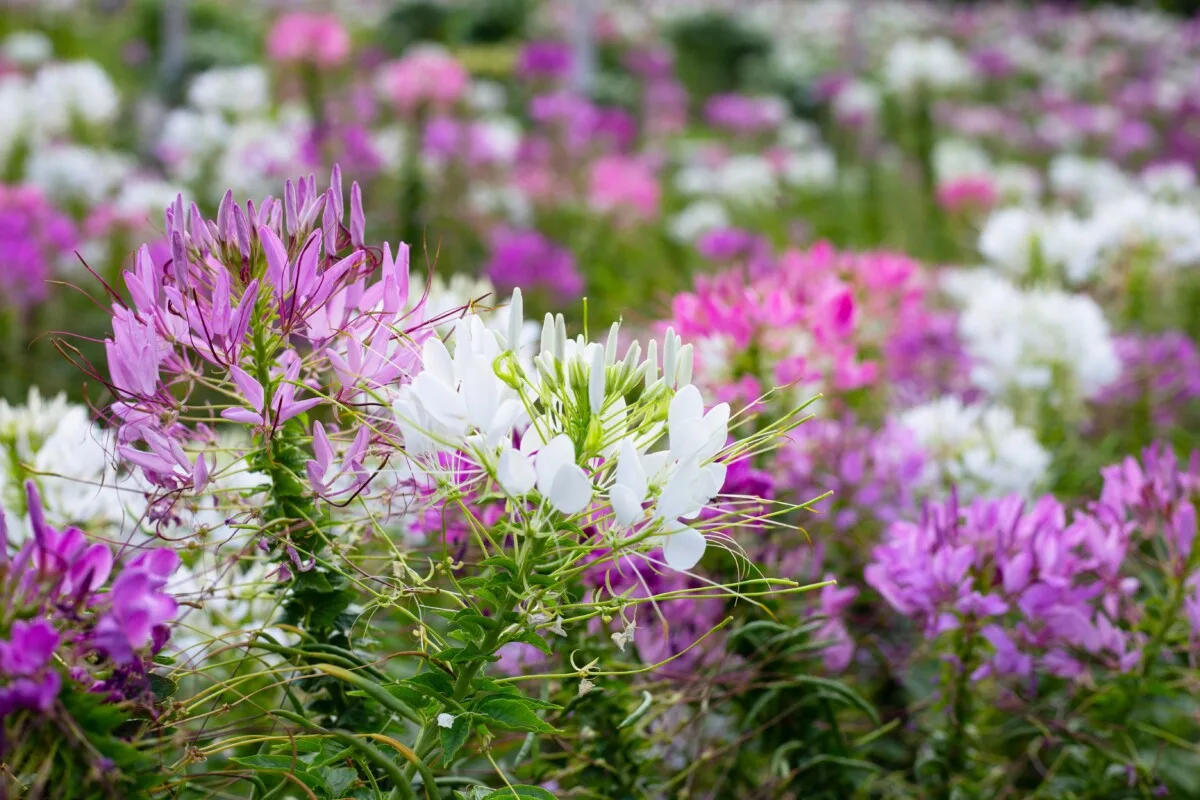
Cleome, or Spider Flower, graces gardens with tall spires adorned by clusters of spider-like blooms in shades of pink, purple, and white. Their architectural presence and distinctive shape make them an eye-catching choice for both formal and cottage-style gardens. These flowers get quite tall, so consider their height of 3 to 5 feet when choosing where to plant them.
- Start Indoors: 6-8 weeks before the last frost.
- Planting Depth: Surface sow.
- Germination Time: 10-14 days.
- Light Requirements: Full sun.
- Soil: Well-draining.
8. Cosmos
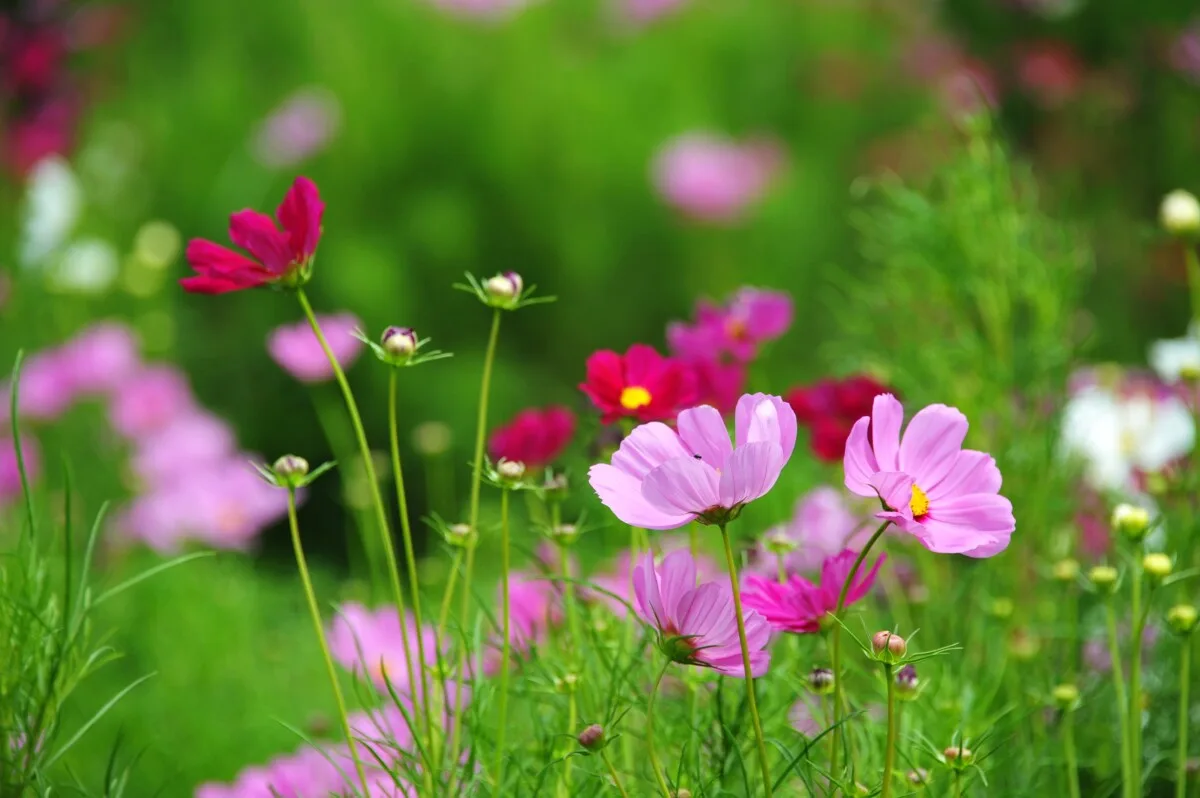
Cosmos come with delicate, daisy-like flowers on lacy, fern-like foliage, creating a profusion of color in shades of pink, white, and lavender. With their airy and natural appearance, cosmos add a touch of whimsy and grace to garden borders and wildflower meadows. They can also grow quite tall.
- Start Indoors: 4-6 weeks before the last frost.
- Planting Depth: Surface sow.
- Germination Time: 7-14 days.
- Light Requirements: Full sun.
- Soil: Well-draining.
9. Lobelia
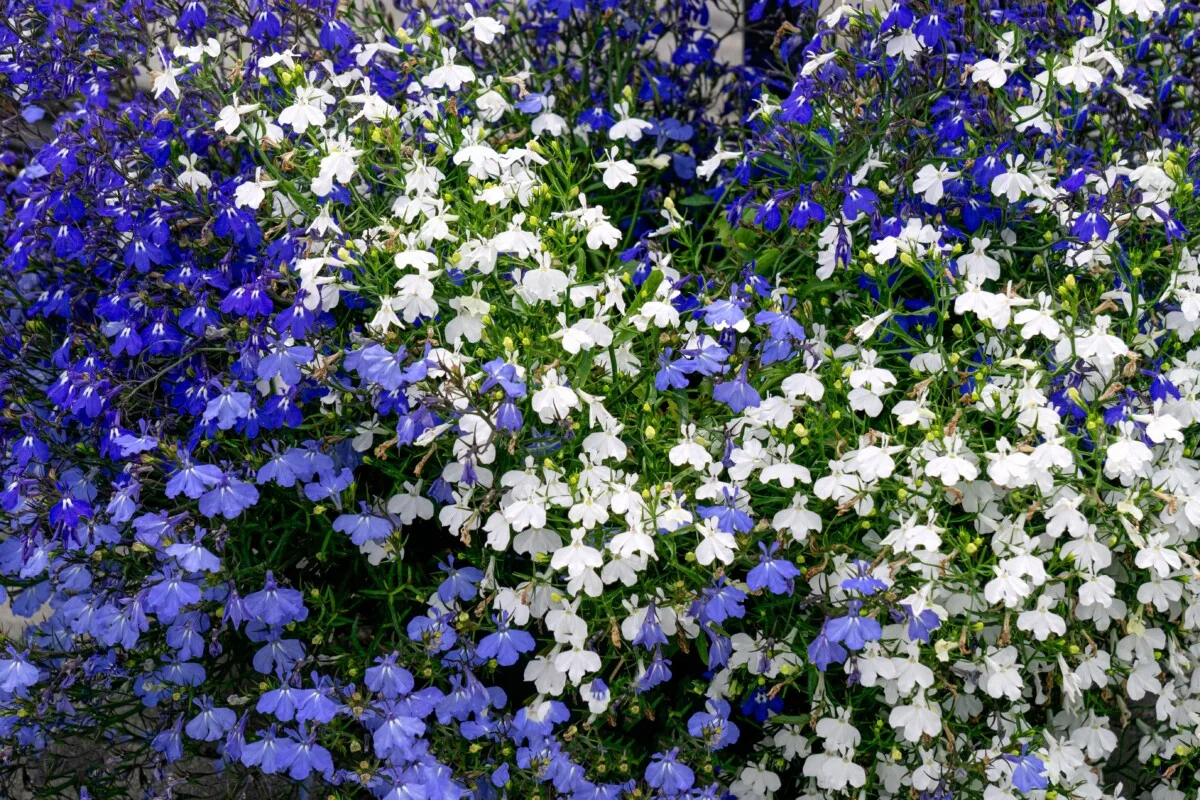
Lobelia blooms present small, tubular flowers in shades of blue, purple, white or red, creating a cascade of color. Perfect for trailing over edges or filling hanging baskets, lobelia adds a cool and refreshing element to gardens.
- Start Indoors: 10-12 weeks before the last frost.
- Planting Depth: Surface sow.
- Germination Time: 14-21 days.
- Light Requirements: Part to full shade.
- Soil: Moist, well-draining.
10. Marigolds
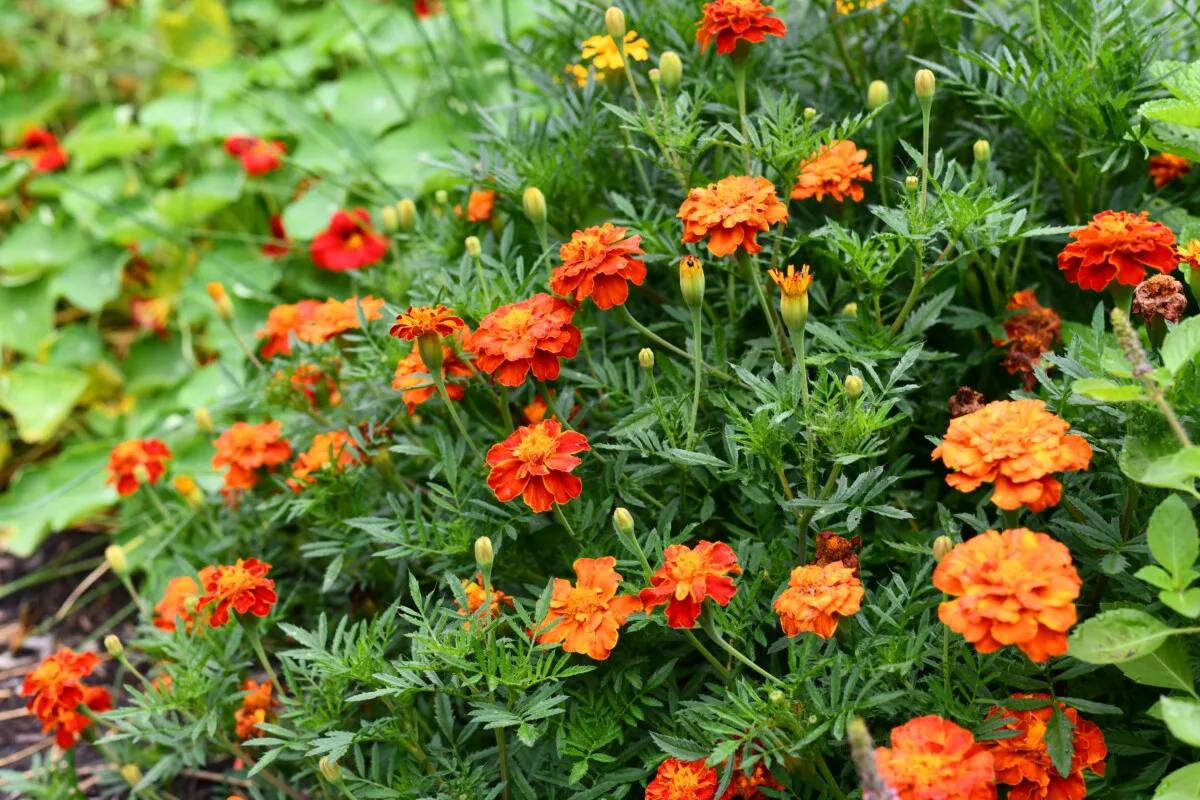
Marigolds are a classic and boast bold, sunny blooms in warm hues of orange, yellow, and gold. Their cheerful and robust appearance makes them a popular choice for borders, containers, and companion planting in vegetable gardens.
- Start Indoors: 6-8 weeks before the last frost.
- Planting Depth: 1/4 inch.
- Germination Time: 5-7 days.
- Light Requirements: Full sun.
- Soil: Well-draining.
11. Nasturtium
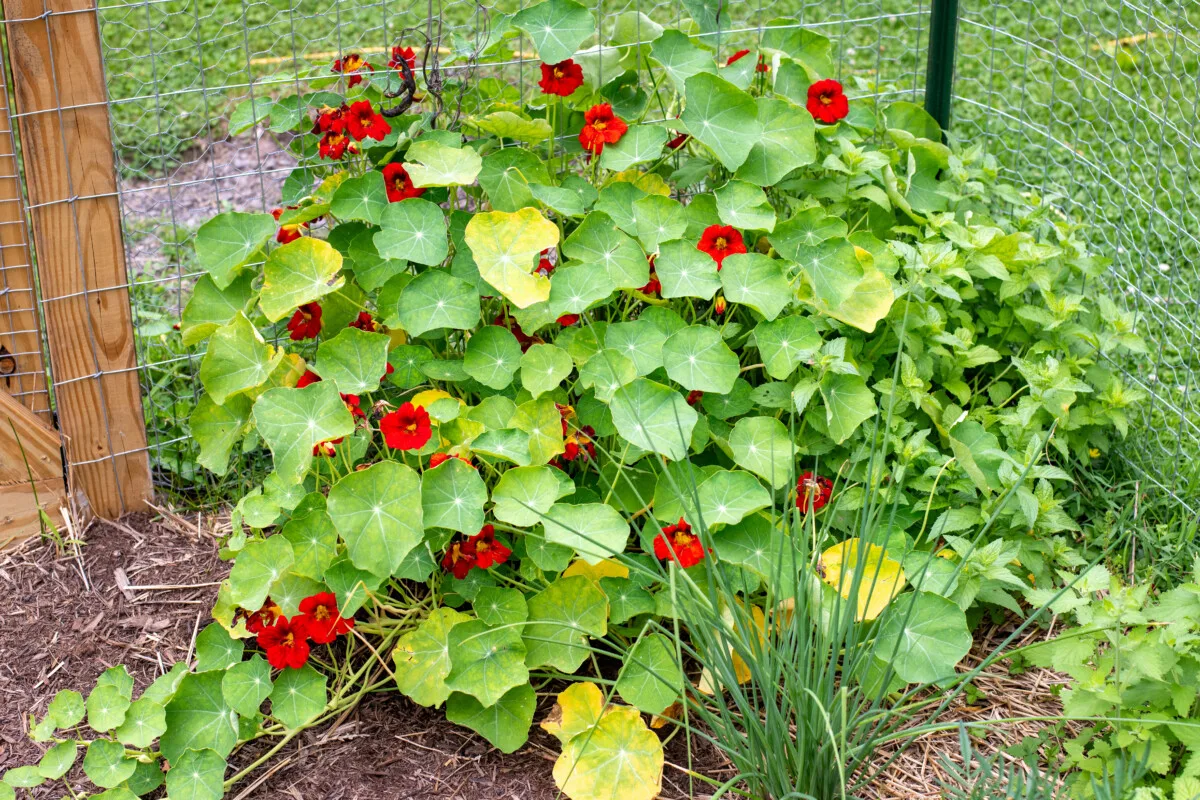
Nasturtium features round, flat-faced blooms in rich, warm tones of orange, red, and yellow. The unique, shield-shaped (and delightfully peppery) leaves add an additional layer of interest, making nasturtiums a lovely choice for both ornamental and edible gardens.
- Start Indoors: 4-6 weeks before the last frost.
- Planting Depth: 1 inch.
- Germination Time: 7-14 days.
- Light Requirements: Full sun to partial shade.
- Soil: Well-draining.
12. Pansies
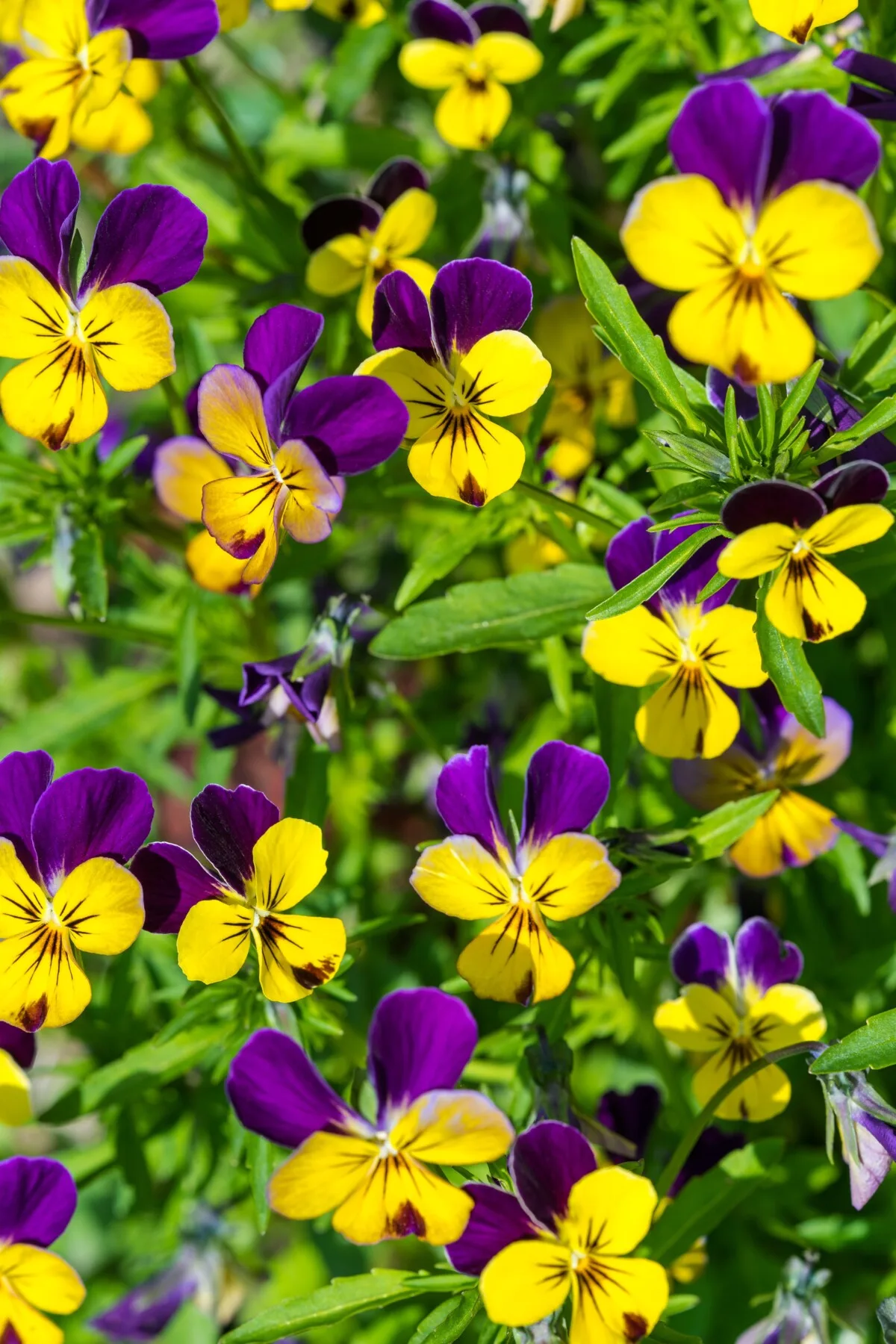
I love how pansies appear to have faces. Maybe I’ve been watching too many cartoons. Their wide range of colors, including purple, yellow, and bi-color combinations, make them a great choice if you want cooler colors in your garden.
- Start Indoors: 8-10 weeks before the last frost.
- Planting Depth: Surface sow.
- Germination Time: 10-21 days.
- Light Requirements: Full sun to partial shade.
- Soil: Well-draining.
13. Petunias
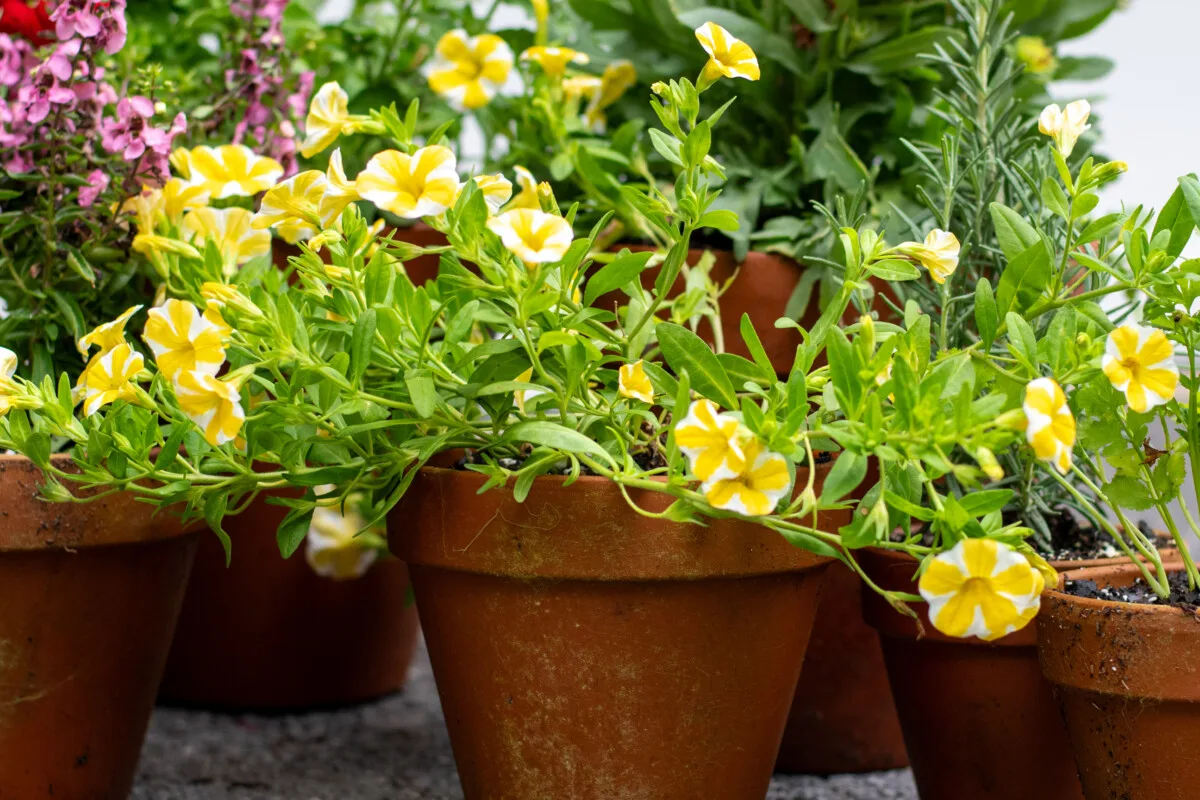
Another classic, petunias showcase trumpet-shaped blooms in an array of colors, from soft pastels to vibrant hues. With their prolific flowering habit (keep dead-heading and they keep flowering) and versatility in garden beds and hanging baskets, petunias are cherished for their long-lasting and impactful display.
- Start Indoors: 10-12 weeks before the last frost.
- Planting Depth: Surface sow.
- Germination Time: 10-21 days.
- Light Requirements: Full sun.
- Soil: Well-draining.
14. Phlox
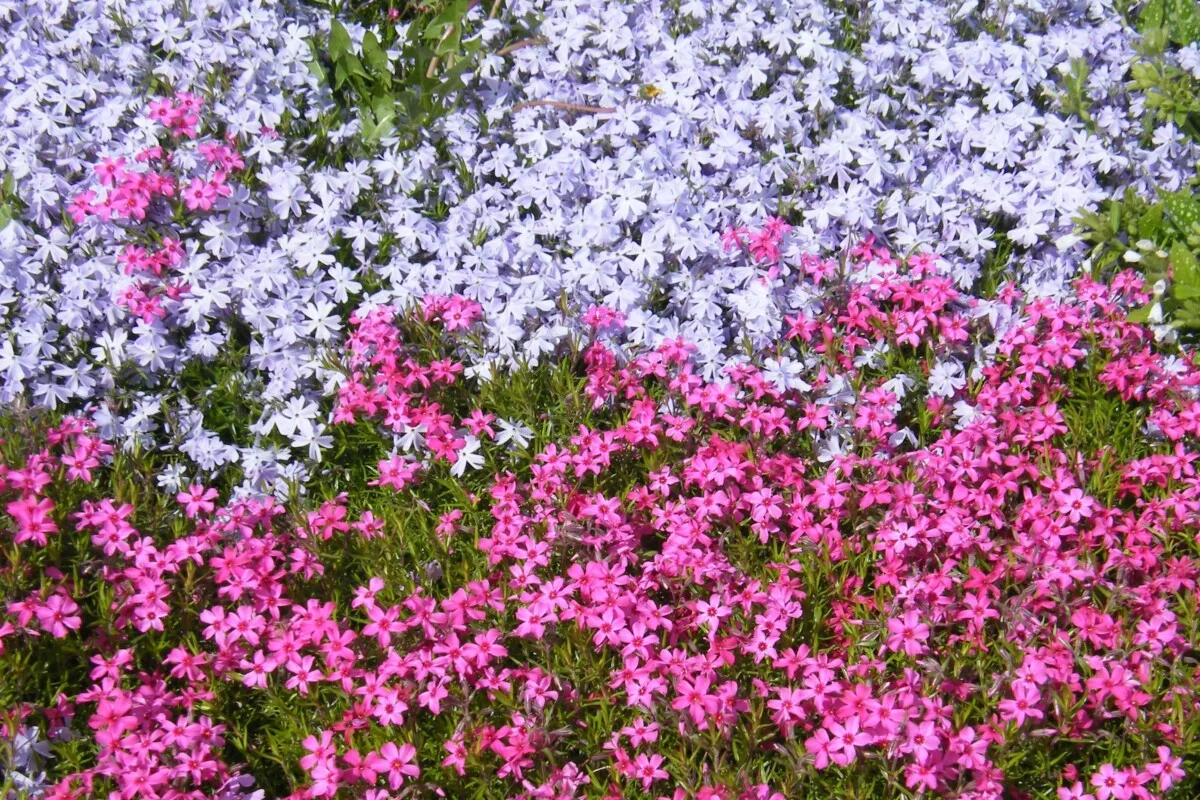
Phlox are a favorite among many for their clusters of fragrant, star-shaped flowers in shades of pink, lavender, and white. The profusion of blooms creates a carpet of color, making phlox a popular choice for borders and cottage gardens.
- Start Indoors: 8-10 weeks before the last frost.
- Planting Depth: Surface sow.
- Germination Time: 14-21 days.
- Light Requirements: Full sun to partial shade.
- Soil: Well-draining.
15. Snapdragons
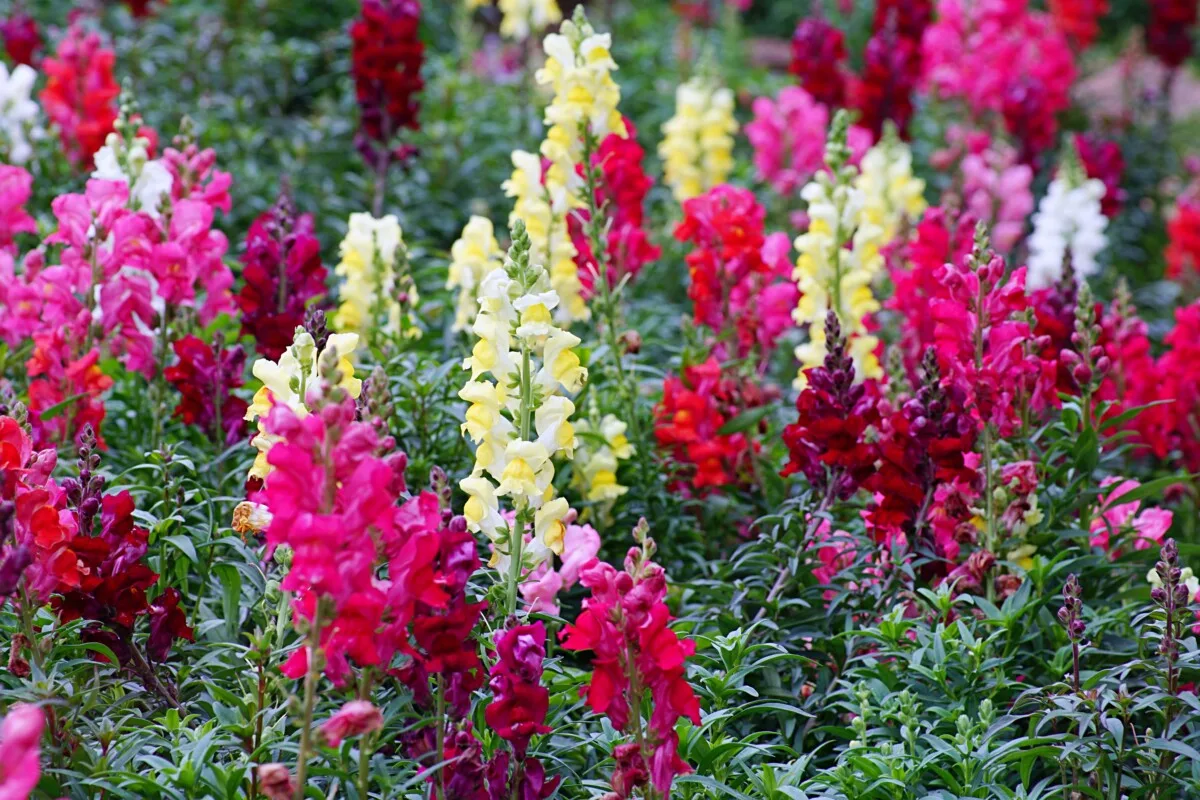
Snapdragons produce spikes of colorful flowers in a variety of hues, including pink, red, yellow, and white. The unique shape and vibrant colors make snapdragons a favorite for both garden beds and cut flower arrangements.
- Start Indoors: 8-10 weeks before the last frost.
- Planting Depth: Surface sow.
- Germination Time: 10-21 days.
- Light Requirements: Full sun to partial shade.
- Soil: Well-draining.
16. Zinnia
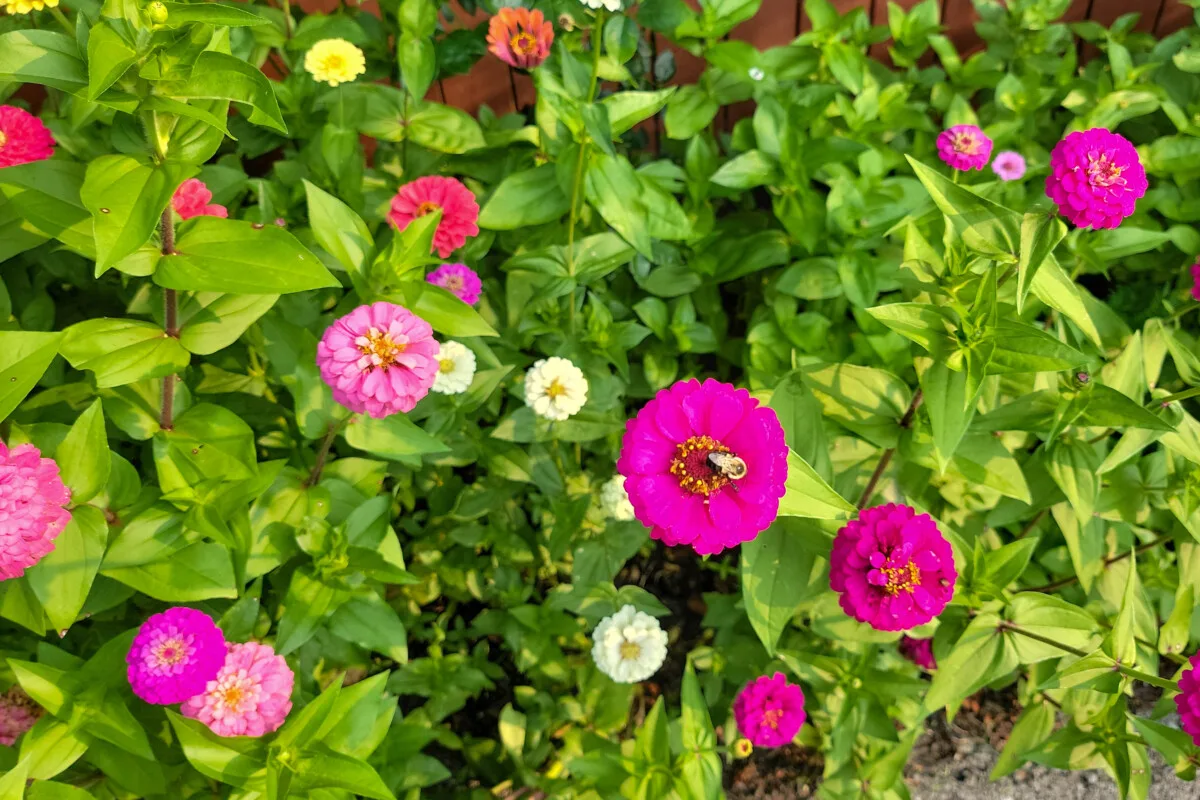
Zinnias offer a kaleidoscope of color with their bright, dahlia-like blooms in shades of pink, orange, red, and purple. Known for their long-lasting flowers and diverse forms, zinnias are a popular choice for adding vibrant splashes of color to garden beds and bouquets.
- Start Indoors: 4-6 weeks before the last frost.
- Planting Depth: Surface sow.
- Germination Time: 7-14 days.
- Light Requirements: Full sun.
- Soil: Well-draining.
Adding more flowers in and around your garden will ensure you have plenty of pollinators present, which means higher yields. So why stop here? We could all use a bit more color in our lives. Here are a few more suggestions for flowers to sow indoors before spring gets here.
Did you hear? Dried flower arrangements are making a comeback?
18 Flowers to Grow for Gorgeous Dried Flower Arrangements
If you want the color without all the work, consider a wildflower garden this year.
20 Plants To Grow In Your Easy-to-Manage Wildflower Garden
Or if you’re a fan of having fresh flowers indoors…
15 Quick & Easy to Grow Annuals for a Cut-Flower Garden
And don’t forget to drink your flowers, too.
18 Plants To Grow In Your Herbal Tea Garden – Blend Your Own Teas For Pleasure & Profit
Read Next:

Get the famous Rural Sprout newsletter delivered to your inbox.
Including Sunday musings from our editor, Tracey, as well as “What’s Up Wednesday” our roundup of what’s in season and new article updates and alerts.


